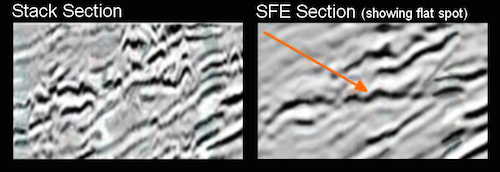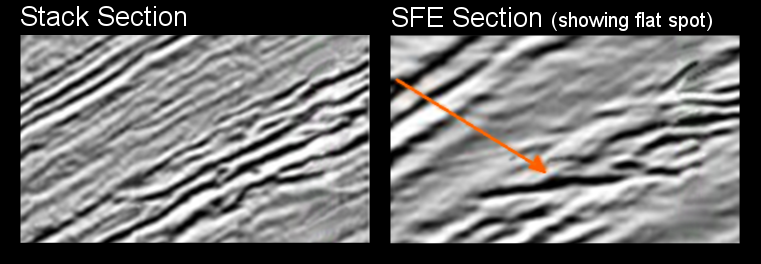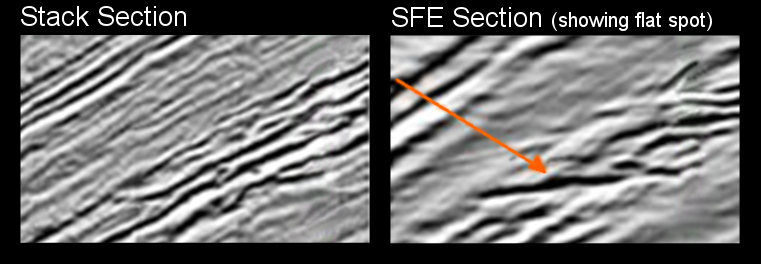Seismic Feature Enhancement
A powerful flat-spot utility that enhances the signal of consistent flat events and reduces the “noise” of the channel reflections
Product overview
- Uses technology that has had a proven record of accomplishment in reducing risk of drilling dry holes in exploration prospects
- Easily used by exploration geoscientists at their interpretation workstations
- Can be seamlessly integrated with existing seismic major interpretation systems
- Superior to optical stacking
Product description
Seismic resolution of fluid contacts within potential reservoirs is a key risk-reducing factor in exploration prospects. Occasionally, seismic data clearly resolves obvious fluid contacts prior to drilling. Frequently though, subtle flat spots are only recognised after discovery. Recognising flat spots earlier in the game would clearly enhance the competitive position and reduce the risk of dry holes.
A technique has been developed and tested to enhance the signal of flat events within 3D seismic volumes, utilising stacking of parallel traverses. The technique involves interpreting a traverse down the likely turbidite channel axis along which to search for flat spots, and stacking a specific number of traces within an aperture. This enhances the signal of the consistent flat events and reduces the “noise” of the turbidite channel reflections. The signal to noise of flat events is improved by the square root of the number of relevant input traces, just as if stacking moved-out gathers. This is superior to optical stacking where the result can be dominated by a single high amplitude event.
Benefits of SFE
SFE provides a very powerful technique to help explorationists recognise flat spots much earlier during the interpretation cycle. SFE is now being routinely used to reduce the risk of drilling dry holes. As with our other products, SFE is easy to use and seamlessly connects with the major interpretation data repositories used by our clients. SFE has been developed using Qt, which is a cross platform object orientated development tool from Trolltech. SFE seamlessly connects with third party seismic and well data repositories (including SeisWorks and GeoFrame) using our client/server technology.





















